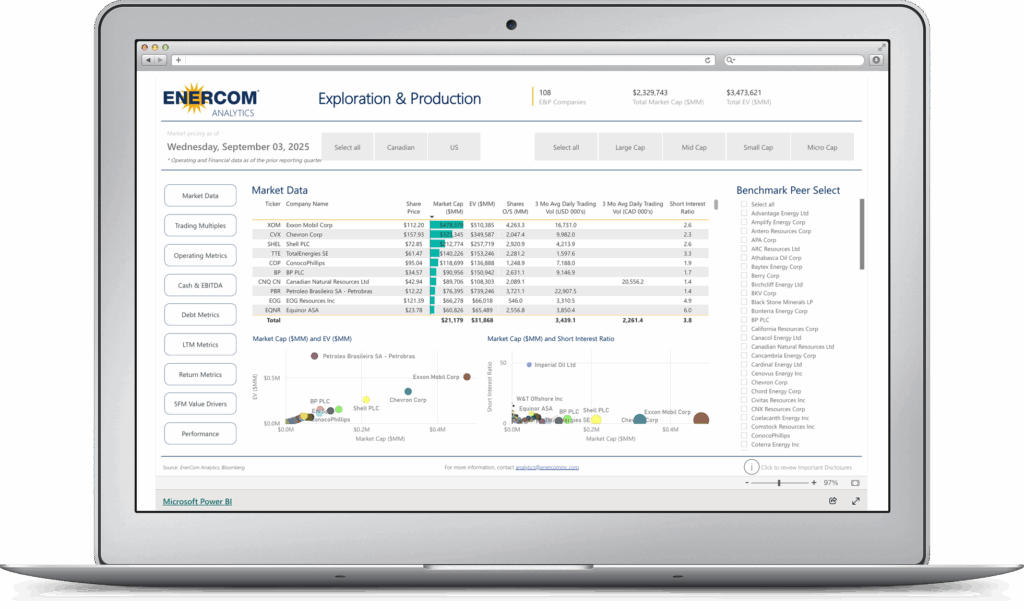Severe temperatures and extreme prices push FERC toward pipeline approval; will bring Marcellus gas to Pa., NJ customers
According to PennEast Pipeline Company LLC, the Federal Energy Regulatory Commission (FERC) recognized the need for and the public benefit of the PennEast pipeline and issued an order on January 19, 2018, under section 7(c) of the Natural Gas Act – approving the pipeline for construction, subject to a series of conditions.
FERC published a 106-page “Order Issuing Certificates” on its website.
The PennEast pipeline, a 120-mile underground natural gas pipeline that will originate in Luzerne County, Pennsylvania and terminate in Mercer County, New Jersey. So far, the pipeline has received approximately $1 billion in investments and has been in planning since 2014. The formal FERC application was submitted in 2015.
PennEast Pipeline Company LLC is a coalition of companies including NJR Pipeline Company; SJI Midstream; Southern Company Gas; Spectra Energy Partners; and UGI Energy Services. The member companies said they have safely delivered energy to more than three million Pennsylvania and New Jersey customers for 400 collective years.
The approval came two weeks after a severe regional cold spell that forced natural gas prices in New Jersey to skyrocket 31 times above the average price. The PennEast Pipeline should alleviate demand shortages in the areas that it serves.

“Approval of the PennEast Pipeline is a major victory for New Jersey and Pennsylvania families and businesses,” said Anthony Cox, chair of the PennEast Pipeline Company’s board of managers. “They will reap the benefits of accessing one of the most affordable and abundant supplies of natural gas in all of North America. PennEast will lower gas and electricity costs, increase reliability, improve air quality and make the region more competitive for jobs in the coming decades.”
The pipeline route will begin in the Marcellus Shale production area near Pennsylvania and will connect with the existing underground Transcontinental Pipeline near New Jersey. The route includes 24 municipalities in Pennsylvania and six in New Jersey.
Approximately 90% of the natural gas slated to move through the PennEast Pipeline is contracted with local gas utility companies and electric power generators that serve nearby customers. New Jersey Natural Gas, South Jersey Gas, Elizabethtown Gas, PSEG Power and ConEd are among those contracted to the PennEast Pipeline.
If PennEast had been built earlier, New Jersey customers would have saved $300 million – natural gas consumption has doubled: PennEast
According to PennEast, one preliminary estimate found that during a 10-day period, the PennEast Pipeline would have saved the region more than $300 million – if it had been in service in November, as originally planned. Even during non-peak periods, such as October, prices in New Jersey were triple those in Pennsylvania, the company said.
“This is a big win for New Jersey businesses, particularly energy-intensive sectors such as manufacturing, to have a long-term, reliable and affordable fuel supply that makes the region more attractive for business growth and jobs,” said Michele Siekerka, president of the New Jersey Business and Industry Association. “The closures of Oyster Creek and two major coal plants in the area demonstrate the need and desire for more affordable natural gas that protects our environment with stable, 24/7 fuel supplies.”
Since 2005, natural gas use has more than doubled in New Jersey and increased five-fold in Pennsylvania for electric generation. As a result, carbon emissions are dropping to their lowest level in nearly three decades while air quality has improved across the region.
With FERC quorum in place, pipeline projects can be approved or denied
FERC issued its draft Environmental Impact Statement (EIS) for PennEast under the Obama Administration in July 2016 and finalized its recommendations after nearly nine months of additional public input.
The final EIS in April 2017 confirmed that construction and operation of the PennEast Pipeline would have minimal environmental impact, which would be reduced to “less than significant levels” with PennEast’s and FERC’s mitigation measures.
The Pennsylvania Department of Environmental Protection, under Governor Tom Wolf, issued its 401 Water Quality Certification in February, and in May, the United States Environmental Protection Agency added that the final EIS included “improved safeguards for the protection of human health and the environment.”
The PennEast Pipeline Company updated its estimated in-service date to 2019, with construction still beginning in 2018. The original project timeline allowed for many variables, but did not anticipate the many months without a voting quorum at FERC, the company said.

The FERC commissioners weren’t unanimous in approving the PennEast project. Commissioners Neil Chatterjee and Cheryl LaFleur concurred in voting to approve the project. Commissioner Richard Glick dissented.
FERC commissioners’ statements regarding the PennEast pipeline are reproduced below.
Commissioner Neil Chatterjee Statement
January 19, 2018
Docket No. CP15-558-000
Order
The PennEast Project
“I concur in this order and agree with granting a certificate of public convenience and necessity to PennEast, authorizing it to construct and operate the proposed PennEast Project, subject to the conditions in the order. I believe a clear need has been demonstrated for the project. PennEast has executed long-term, firm precedent agreements with 12 shippers for approximately 90 percent of the project’s capacity. This additional gas infrastructure will provide additional natural gas transportation capacity into Pennsylvania and New Jersey.
“However, I do have concerns about the order’s impact on landowners. For this project, there are incomplete surveys due to lack of access to landowner property. I recognize that the rights of landowners are important, and do not take their concerns lightly. Under section 7 of the Natural Gas Act, once the Commission grants a certificate, a certificate holder is authorized to acquire the necessary land or property to construct the approved facilities by exercising the right of eminent domain if it cannot acquire the easement by an agreement with the landowner. It is important that the Commission have as much data as possible on which to base a determination that has such a momentous effect.
“I am supporting the project despite these concerns, because I believe the Commission has sufficient information in the record on which to make its decision – the certificate application and supplements, information developed through Commission staff’s data requests, field investigations, the scoping process, literature research, alternatives analysis, and contacts with federal, state, and local agencies, and individual members of the public. Additionally, the order imposes conditions requiring the filing of additional environmental information for review and approval once survey access is obtained.
“But I would like to encourage pipeline companies and landowners to work with the Commission to maximize engagement and minimize the impacts on landowners going forward. I believe that a cooperative process leads to the best results for all stakeholders.
“For these reasons, I respectfully concur.”
Commissioner Cheryl A. LaFleur Statement
January 19, 2018
Docket No. CP15-558-000
Order
The PennEast Project
“In today’s order, the Commission authorizes the development of the PennEast Project, a natural gas pipeline from Luzerne County, Pennsylvania to Mercer County, New Jersey. I write separately to provide additional context regarding my conclusion that the PennEast Project is in the public interest.
“Deciding whether a project is in the public interest requires a careful balancing of the economic need for the project and its environmental impacts. 1 In applying this balancing test to the extensive record developed in this case, I am persuaded that on balance, the PennEast Project is in the public interest. PennEast has demonstrated that approximately 90 percent of the project’s capacity has been subscribed, primarily by state-regulated local distribution companies and owners of natural gas-fired electric generation facilities. I believe that under existing Commission precedent, this evidence of precedent agreements supports the determination that the project is needed.
“I have carefully considered the environmental impacts of the PennEast Project, and agree with the order’s determination that, while the Project will result in some adverse environmental impacts, the environmental conditions imposed in today’s order will ensure that such impacts are reduced to acceptable levels. I do share the concerns of my colleagues that the record reflects a significant number of environmental surveys that are incomplete due to lack of access to landowner property. I am persuaded, however, that Commission staff has developed a sufficient record to adequately evaluate the environmental impacts resulting from the PennEast Project. 2 Moreover, today’s order imposes a number of environmental conditions which are intended to specifically allow the Commission and Commission staff to carefully monitor PennEast’s ongoing compliance obligations, particularly related to the completion of those surveys, and any necessary avoidance, minimization, and mitigation measures that may be needed.
“I strongly support Chairman McIntyre’s announcement that the Commission will undertake a generic proceeding to look broadly at our pipeline certificate policies. I believe this review should include both our needs determination and our environmental review of proposed projects. Today’s order highlights the issue of how pipeline developers engage with landowners, which I believe should also be explored in the upcoming generic proceeding. For now, I will continue to take a case-by-case approach to pipeline applications, carefully applying the existing law that governs our certificate process to the factual record developed in each case. In this case, that review led me to conclude that the proposed pipeline is in the public interest.
“For these reasons, I respectfully concur.”
Commissioner Richard Glick Statement
January 19, 2018
Docket No. CP15-558-000
Order
The PennEast Project
“I respectfully dissent from today’s order because I believe that the record in this proceeding fails to demonstrate that the PennEast Project satisfies the requirements for a certificate of public convenience and necessity under the Natural Gas Act. Section 7 of the Natural Gas Act requires that, before issuing a certificate for new pipeline construction, the Commission find both a need for the pipeline and that, on balance, the pipeline’s benefits outweigh its harms.1 I disagree with the Commission’s conclusion that the PennEast Project meets these standards.
“In today’s order, the Commission relies exclusively on the existence of precedent agreements with shippers to conclude that the PennEast Project is needed.2 Pursuant to these agreements, PennEast’s affiliates hold more than 75 percent of the pipeline’s subscribed capacity.3 While I agree that precedent and service agreements are one of several measures for assessing the market demand for a pipeline,4 contracts among affiliates may be less probative of that need because they are not necessarily the result of an arms-length negotiation.5 By itself, the existence of precedent agreements that are in significant part between the pipeline developer and its affiliates is insufficient to carry the developer’s burden to show that the pipeline is needed.
“Under these circumstances, I believe that the Commission must consider additional evidence regarding the need for the pipeline. As the Commission explained in the Certificate Policy Statement, this additional evidence might include, among other things, projections of the demand for natural gas, analyses of the available pipeline capacity, and an assessment of the cost savings that the proposed pipeline would provide to consumers.6 The Commission, however, does not rely on any such evidence in finding that there is a need for the PennEast Project.7 Accordingly, I do not believe that the Commission’s order properly concludes that the PennEast Project is needed.
“In addition to determining the need for a pipeline, the Natural Gas Act requires the Commission to find that, on balance, the pipeline’s benefits outweigh its harms. This includes weighing the risk of harm to the environment, landowners, and communities, as well as public safety more generally. 8 And where, as in this proceeding, there is limited evidence of the need for the proposed project, it is incumbent on the Commission to engage in an especially searching review of the project’s potential harms to ensure that the project is in fact in the public interest. In this case, PennEast’s certificate application lacks evidence that I believe is important to making the public interest determination.9
“The Commission addresses this lack of evidence by conditionally granting the certificate, subject to PennEast’s compliance with the environmental conditions. I recognize that the courts have upheld the Commission’s authority to issue conditional certificates. Nevertheless, doing so comes with significant consequences for landowners whose properties lie in the path of the proposed pipeline. Although the certificate is conditional, it gives the pipeline developer the authority to exercise eminent domain and condemn land as needed to develop the pipeline.10 In my view, Congress did not intend for the Commission to issue certificates so that certificate holders may use eminent domain to acquire the information needed to determine whether the pipeline is in the public interest.11 Further, under the Natural Gas Act, this eminent domain authority is not limited to the extent needed to complete the surveys and other assessments used to satisfy the conditions imposed in the Commission’s order. As a result, there will not necessarily be any restriction on a pipeline developer’s ability to exercise eminent domain while the Commission waits to confirm that the pipeline is in the public interest.
“I recognize that part of the reason that the record in this proceeding is incomplete is that landowners have denied PennEast access to their land for the purpose of conducting the necessary studies and assessments. However, the question whether landowners should be required to provide pipeline developers with access to their property for the purpose of determining whether it is suitable for a proposed pipeline is one that is and should be left to the states to decide. The Commission should not use the pipeline certification process as an end run around states and landowners that choose not to grant access to their property before a certificate is issued.12
“For these reasons, I respectfully dissent.”






